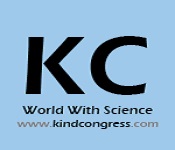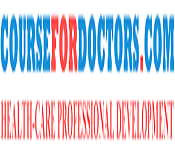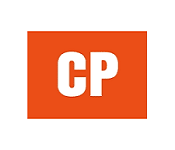Scientific Session
Medical care has several important functions aside from restoring or maintaining health. These other functions are assessment and certification of health status, prognostication, segregation of the ill to limit communication of illness, and helping to deal with the issues of illness--the caring function. medical aid serving these "
paracurative" functions may legitimately tend indepedently, without associated curing or preventive intent of the provider of care. Although such services don't end in benefits to health, like extension of life or reduction of disability, they are doing produce other valued outcomes, outcomes not measurable as a
gain in personal health status.
1.There are many reasons why it's essential to look at education when striving for safer medical care. Key reasons include:
providing education about the core principles of medical care to all or any health care providers creates a foundation of values upon which to develop a positive safety culture;
2.Having an adequate and well-trained medical care health workforce is important for providing safe, top quality care;
3.Educating the workforce about safety skills has the potential to further
improve patient outcomes.
Medical care is guided by eight core principles:
Access or first-contact care
Comprehensiveness
Continuity of care
Coordination
Prevention
Family orientation
Community orientation
Person-centredness.
When many of us examine hospitals and other healthcare facilities, they have faith in doctors and nurses working there without giving much thought to why healthcare administration is so important. One reason the healthcare administration industry is
foremost because it keeps costs down. When a patient who doesn't have insurance look for medical help, hospital administrators can work thereupon patient to lower his or her overall costs.
Diagnostics are wont to determine what disease a
patient is afflicted by, and within the case of infectious diseases what's causing the disease. it's the clinical assessment of symptoms and results from diagnostic tests made by the healthcare provider. This information is then wont to determine what the acceptable therapy is: for
instance a selected antibiotic, other medicines or bed rest. Rational use programs are hooked in to good diagnostics, i.e. a well-educated doctors and access to relevant diagnostic tests.
Forensic microbiology is that the study of genetics, pathogens and contagions in an everlasting competition to possess people safe and to path that bring harm. This field is fairly new and evolving still. With a risk of bioterror and bio crime, the fast documentation and subtyping of infectious agents is vital . Microbial genetic analysis is an appreciated tool during this ground. The us Department of Homeland Security recognized the
Bio Forensics Analysis Centre to become the foremost U.S. biodefense research institution that involved in bio forensics.
• Expansion of Microbial Forensic
• Forensic and Autopsy Microbiology
• Bioterrorism
• DNA Profiling
The key purpose of health-related AI applications is to look at relationships between prevention and treatment techniques and patient outcomes.The practice of complicated algorithms and software to compete human reasoning within the study of complex medical data is that the AI (AI) in Healthcare. AI is that the
capability for computer algorithms to estimate conclusions without straight human input.
• AI and Robotics Transformation in Health Care
• AI Technologies
• AI in Radiology
• Disease Diagnosis
• Disease Diagnosis
• Electronic Health Records
• Drug Interactions
• Creation of latest Drugs
• Derma scanner
• Medical image computing
A day quite 130 people within the us die after overdosing on opioids and it overdoses increased half-hour from July 2016 through September 2017 in 52 areas in 45 states. About 21-29 you look after patients prescribed opioids for chronic pain misuse them. The misuses of an addiction to opioids including medicine heroin, relievers, pain, and artificial opioids, for instance , fentanyl – may be a serious national crisis that affects public health also as economic and welfare . The centres for disease control and
prevention opioid misuse alone within the total “economic burden” of prescription opioid misuse alone within the us is $78.5 billion a year, including the prices of addiction treatment, lost productivity, healthcare, and criminal justice involvement.
Neonatal abstinence syndrome
Overdose-reversing drugs
Better practices for pain management
Prevention and Risk Factors
Treatments and Therapies
Mental disorder also called a psychiatric disorder or mental disease . psychological state problems could be associated with extreme stress thanks to a specific situation or arrangement of occasions. Mental disorders are often physical also as emotional and psychological; mental illnesses could also be caused by a reaction to environmental stresses.
Health insurance is an insurance product which covers the medical and surgical expenses of an insured individual. It reimburses the expenses incurred thanks to illness or injury or pays the care provider of the insured individual directly.Medicare or medical costs are rising year on year. As a matter of fact, inflation in Medicare is above inflation in food and other articles. While inflation in food and clothing is in single digits, Medicare
costs usually escalate in double digits.
Adoption and utilization of EHRs are increasing rapidly but variable, given pressures of monetary incentives, policy and technological advancement.
Adoption is outpacing published evidence, but there's a growing body of descriptive literature regarding incentives, benefits, risks, and costs of adoption and utilization. Further, there's a rising body of evidence that EHRs can bring benefits to processes and outcomes, which their implementation are often considered as a healthcare management strategy.
Pharmacy informatics is that the field the spotlights are taking medication-related information and learning inside, the continuum of human healthcare. the sector of Pharmacy informatics has clothed to be
vastly improved found out over late years. Models of Pharmacy informatics incorporate Computerized Provider Order Entry (CPOE), bedside bar coding, Toxicity Informatics, Drug Informatics, Clinical Informatics, Pharmacist Evaluation.
• Safe and Efficacious Medication Use
• A pharmacy informatics perspective
• Latest Evolution in Pharmacy Informatics
A marketing plan may be a strategic document to realize specific business goals and objectives over a selected period of time .Crafting any hospital marketing plan may be a near-impossible task. The principal challenge is to satisfy the various and diverse internal demands and to try to to so with finite (and often shrinking) resources. It must be a cohesive, coordinated plan that effectively reaches your organization’s various audiences and serves or supports a variety of service lines during a sort of service areas.
Health Inequalities
Poverty
Socioeconomic status
Risk and medicine
Individuals and their behaviours
Prejudice and blame
Ambulatory
Healthcare Services
Healthcare Support Services
Healthcare Clinic Management
Improving the well-being of mothers, infants, and youngsters is a crucial public health goal for the us. Their well-being determines the health of subsequent generation and may help forecast future public health challenges for families, communities, and therefore the health care system. The objectives of the Maternal, Infant, and Child Health topic area
labels a good range of conditions, health behaviors, and health systems indicators that infect the health, wellness, and quality of lifetime of women, children, and families.
Its goal is to engage front-line staff and hospital leadership to make improvement in three domains: improving the quality and safety of care; ensuring a high-quality work environment to attract and retain nurses; improving the experience of care for patients and their families to profit by the understanding and contribution of these staff individuals, doctor's facilities should esteem their potential commitments, moving their vision of nursing from being a cost focus to being a basic administration line.
This area deals with understanding the disease processes, statistics and to make the proficient use of data. Epidemiology has helped to develop the methodology used in clinical research, public health studies and also for basic researches in biological science. The study of disease transmission is the exploration & research of the causes and its belonging to the wellbeing & illness conditions.
Related to Conference : Healthcare Conference | Healthcare Congress | Hospital Management Conference | Hospital Management | Healthcare Event | Healthcare Quality Congress | Healthcare Quality and Operations Management Symposium
Market Analysis
Market Analysis of Health Care in Netherlands
In the Netherlands, most questions and complaints concerning physical and mental health are directed towards a primary healthcare provider (General Practitioners, physiotherapists, pharmacists). A strong primary healthcare is therefore an essential pillar of efficient healthcare. Primary healthcare professionals are the
gatekeepers to specialist care and prevent unnecessary (and costly) medical care. Primary healthcare has a large number of tasks: providing information, giving advice about self-care and prevention, nursing and caring,
diagnosing and treatment. Additionally,
primary healthcare is responsible for the management of medical records and referrals to medical specialists. Based on a new legislation effective from 2006, the communities will organise some parts of the care for elderly and disabled persons. In the future, as co-operation between primary and secondary healthcare improves, the importance of primary healthcare will increase further. An example of this is the consultation between professionals in primary and secondary healthcare, which has already been implemented successfully in mental healthcare. Possibilities for consultation will increase because of
telemedicine, the electronic assessment of medical questions. In principle, citizens are responsible for their own health. Where physical and mental symptoms are concerned, a citizen can decide for him- or herself whether or not to seek primary healthcare. Primary healthcare stimulates this (re-)taking of the patient’s personal responsibility, the prevention of disease, the recuperation and revalidation, and adaptation to a
chronic disease or
handicap. Primary healthcare must be offered according to demand, must be reachable (close by), must be organised efficiently, and must provide care of high quality. The new
HealthInsurance Act no longer differentiates between two groups of citizens based on their income. The “
privately insured” and those funded by “sickness funds” will both have the same arrangements. If the costs for this new insurance are too high for an individual, the government will reimburse costs. The hospital sector is characterised by its dynamic nature. The demand for care and the provision of care by hospitals influence each other greatly, and this influence is becoming more and more direct. New developments, possibilities and issues related to the demand for care (patient rights, a multicultural society, growth in prosperity, and an ageing population), the supply of care (explosive growth of technology and scientific knowledge, professionalisation,
micro-specialisation and multidisciplinary collaboration), and care policy (the administrative process of localisation and
deregulation, the rise of the integrated
medical specialist company, the establishment of the chain of care, the boom in inter-facility care and the process of economies of scale) demand a new look at the status, administration, quality, organisation and accessibility of the hospital sector. The next few years will see a continuation of the transformation of the hospital into an integrated medical specialist company. The concept is based on the patient-driven demand for care and will allow all the care processes both inside and outside the hospital to be organised around the patient. What this means is that there will be a whole spectrum of care that progresses from general, to inter-facility to specialised care. Even though the administration, organisation and working practices of hospitals are facing
enormous changes, the primary duty of the hospital will not change.
Major Players Operating in the Global Hospital Management
Software Market include Cerner Corporation, GE Healthcare, Allscripts Healthcare Solutions, Inc, IBM Corporation, Siemens Healthineers AG, Centrak Ltd., Ekahua Inc., AeroScout Inc., Zebra Technologies Corporation, Infor Inc., Trimble Navigation Ltd., Philips Healthcare, Johnson Controls International Plc., Motorola Solutions Inc., Sonitor Technologies A.S., Sisoft, Wellsky Corporation, Midmark Corporation, Medical Information Technology, McKesson Corporation and others. The companies are developing advanced technologies and launching new services in order to stay competitive in the market. Other competitive strategies include mergers & acquisitions and new service developments.
Universities Associated With Hospital Management Worldwide:
Healthcare is one of the biggest industries in the United States and the world. As some of the Universities are listed out:
Yale University School of Medicine
Nova South-eastern University College of Osteopathic Medicine
Washington University, School of Medicine
New York University School of Medicine
Icahn School of Medicine at Mount Sinai
University of Alabama at Birmingham School of Medicine
University of Amsterdam
RWTH Aachen University
University of Copenhagen
MacKay Memorial Hospital
University of Copenhagen










